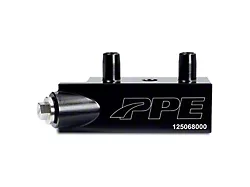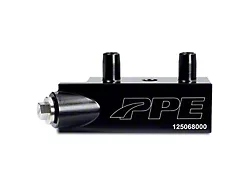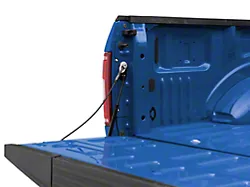
A Timeline of Vintage and Antique Trucks
Contents

Introduction
Pickup trucks may be the quintessential American vehicle, embodying all that is rugged and powerful about this country and its residents. Originating in the World War I era, pickup trucks have evolved over the decades to become impressive performance vehicles. Whether you need a pickup for hauling or to carry heavy cargo or you just enjoy the flexibility of a pickup, this mode of transportation is here to stay.

The First Pickup Truck Model
Pickup trucks date back to 1896, when Gottlieb Daimler rolled out what he called "Vehicle No. 42." With 4 horsepower, this 1.1-liter, 2-cylinder engine was purported to have had the capacity to haul 3,300 pounds, but this is widely assumed to be an exaggeration. A few similar vehicles were produced in the next decade, including models such as the Autocar, King, and Reo. Gradually, this vehicle style began capturing the attention of drivers as they imagined the capabilities of these vehicles with open beds for hauling, and the popularity of pickup trucks was born.
The Evolution of the Pickup Truck
Chevrolet released an early prototype of the pickup truck in 1918. This vehicle essentially looked like a car without a rear body. After buying this vehicle, consumers had to construct the rest of the truck by ordering parts to finish it, adding the bed and sides. Dodge also released an early model in 1918, which was an offshoot of a military ambulance used during World War I. This half-ton truck had 35 horsepower and a four-cylinder engine. The original model had screened sides, and six months later, Dodge released a similar model with hard panels instead of screens. Ford entered the game in 1925 with the release of the Ford Model T Runabout With Pickup Body. This vehicle had a 40-horsepower, four-cylinder engine, and it was popular with drivers from the first year.
Notable Truck Manufacturers
Pickup trucks resonated with drivers over the following decades, but it wasn't until after World War II that they became extremely popular in the United States. Chevrolet, Ford, and Dodge made concerted efforts to capture the pickup market. All three auto manufacturers focused on designing stronger vehicles with higher load capacities and more comforts in the cabs.
Chevrolet
Chevrolet offered drivers trucks with impressive names during the 1930s, such as the Stovebolt and Cast-Iron Wonder. In 1937, Chevrolet released a half-ton pickup, and then in 1947, the model was completely overhauled to make it more comfortable and safer with a wider cargo box. Chevy kept up with changing truck culture over the next decades, offering more cruising comfort and greater towing capacities. During the 1970s, Chevrolet released compact pickups that answered a demand for greater fuel economy. The Silverado model has given consumers three impressive generations since 1999.

Ford
After the pickup debut by Ford in 1925, the Model A pickup was released in late 1927. A complete overhaul included a new engine, transmission, and body. In 1932, Ford upped the ante with a truck line that featured V8 engines, which secured Ford's place in the truck arena. The F-Series truck debuted in 1948 with eight different levels that had varying load capacities and engines. The F-Series has continued through the present, with each generation undergoing significant changes in exterior styling, dimensions, fuel efficiency, and engine capabilities. The current F-Series includes the F-150, which has been highly popular with drivers for more than 13 generations.

Dodge
After Dodge's early release of a pickup design in 1918, the auto manufacturer tinkered with body and engine designs throughout the 1920s. In 1929, the Dodge half-ton pickup had either a six-cylinder engine with 63 or 78 horsepower or a four-cylinder engine with 45 horsepower. During the 1930s, Dodge trucks increased to three-quarter-ton and one-ton. A more modern frame style was released in 1936. During the 1940s, Dodge trucks had four-wheel drive, and the first diesel trucks rolled out. The 1950s also saw significant modifications as Dodge focused on beefing up its Power Giant pickups that boasted 204 horsepower with 315-cubic-inch V8 engines. In 1973, Dodge introduced the Club Cab that had a small back seat, although still with just two doors. Dodge kept pace in the performance truck arena with the Dodge Ram, which has been refined and enhanced through four generations.
Resources
- A History of the American Pickup Truck
- Evolution of the Ford Truck
- 1941-46 Chevy Trucks
- The First Century of GMC Truck History (PDF)
- An Illustrated History of the Pickup
- History of the Pickup Truck
- Pickup Truck History
- 15 Pickup Trucks That Changed the World
- The History of Chevrolet Trucks in 15 Pickups
- Classic American Pickup Trucks
- A Short History of the American Pickup Truck
- The History of Early American Pickups
- Keep on Truckin': A History of the Pickup
- History of Dodge Pickup Trucks
- The History of the Pickup Truck











